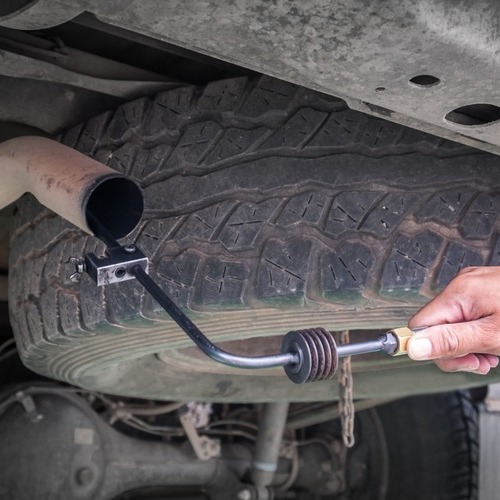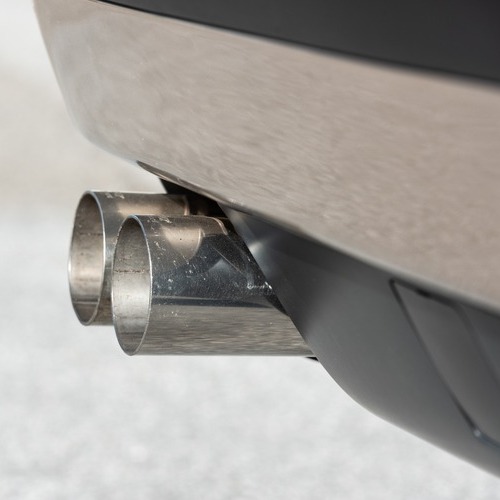
Importance of Emissions Testing
Merriam-Webster has two definitions for ‘emissions’:
1). Something sent forth by emitting such as electromagnetic radiation from an antenna or a celestial body.
2) Substances discharged into the air from a smokestack or an automobile engine
It is the second definition that we’re going to talk about in this article today in the way of emissions testing. Yes, the part where the inspection sticks a device in your vehicle’s tailpipe and determines if it is emitting toxins in the air. So, just what is emissions testing?
Call it emissions testing or smog testing, some folks may call it an invasion, but whatever you choose, it is a real thing and is required by law now. Emissions testing is used to test a vehicle’s emissions for causing excessive smog, adding to air pollution. This test is typically done when you take your vehicle in for a state inspection.
Why do we have to get emissions testing done?
In 1977, the federal government enacted an amendment to the CAA requiring all cars must undergo I/M inspection and maintenance programs to ensure they weren’t emitting more greenhouse gases and pollutants than each state’s limit. It is said by many that the state of California has some of the strictest guidelines when it comes to emissions testing, but other states with a high concentration of vehicles on the road have strict limits as well, like New York City.
What are the emissions testing limits in California?
Your vehicle must show during the emissions testing that it has achieved optimum fuel combustion with a ratio of air to fuel of 14.7:1 during the combustion process. It is allowed a variance of +/- 5% to help the catalytic converter operate.
In certain counties in California that have been declared to have a pollution problem, all vehicles are required to pass emissions testing using the Enhanced Version of the emissions testing. This is where a vehicle is connected to the dynamometer and ‘driven’ on the machine while the emissions testing samples are collected from the tailpipe. The emissions testing applies to vehicles that are 1976 and newer, including gasoline-powered, hybrid vehicles, and alternative-fuel.
How often does an emissions test need to be completed?
As in most states, the state of California requires emissions testing on vehicles manufactured in 1976 and newer. What types of vehicles are exempt from emissions testing in California? An exception to this is diesel-powered vehicles manufactured in 1997 and older years have a GVW (Gross Vehicle Weight) of 14,000 pounds and up.
What types of pollutants are tested for during an emissions test?
During emissions testing, the parts per million are tested for carbon monoxide and hydrocarbons that are being released as the vehicle is ‘driven’ on the dynamometer. What are the consequences of failing an emissions test? If the testing results don’t fall within the permissible criteria, the vehicle fails and cannot be driven until the matter is fixed and rested.
What are the benefits of passing an emissions test?
Another year of happy motoring! And you’ll know you’re doing your part in minimizing your carbon footprint by contributing less to the pollution problem that is plaguing this country.
Are emissions tests required in all states?
Currently, there are thirty-four states that require emissions testing for vehicles with each state having its own requirements and rule. In some states, emissions testing is only required in certain counties, typically determined by population. You should check with the DMV in your state for exact requirements and rules in certain areas.

Be Prepared!
You can take steps to prepare your vehicle for emissions testing all year long and minimize the chance, even eliminating the risk of your vehicle not passing.
1. THE “CHECK ENGINE” LIGHT
If the “Check Engine” light is illuminated, that is an automatic failure. You can get this check engine light matter checked for free at many auto parts stores before taking it in for emissions testing.
2. CHECK THE BATTERY CONNECTION
If you have had to have your vehicle jumpstarted recently or the battery replaced the battery, wait 7 to 10 days before having the emissions testing performed.
3. OIL CHANGE
Get an oil change prior to the emissions testing to ride any hydrocarbon and other pollutants that cause a failed emissions testing.
4. GET A TUNE-UP
A fresh tune-up will ensure that your vehicle’s engine is running at optimum condition but wait 7 to 10 days afterward before taking it in for the emissions testing.
5. COOLANT AND GAS
Make sure your car has ample coolant and gasoline when you take your car in for emissions testing. If your vehicle is low on gas, the fuel pump could be exposed, allowing vapor into the fuel line and resulting in failed emissions testing.
While emissions testing can be a ‘pain’ to deal with, and many states are trying to find a way to help those with low income get past this step, it is for the good of our future and the world. If it’s time for your car’s emission testing in Mission Viejo, CA, set up your appointment today by calling Japanese Car Specialties at 949-583-0811.